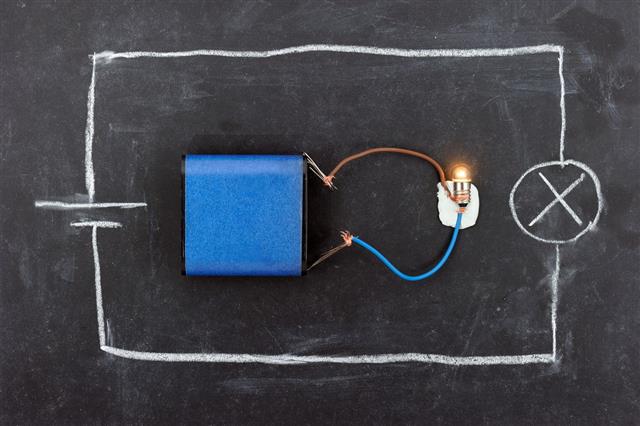
Electromagnetic energy is one of the greatest phenomena of physics. Let us study what is electromagnetic energy, how it is defined and a few facts about electromagnetic energy.
Have you ever given a thought to the microwave which cooks your food with ease and within minutes? If not microwave oven, then what about the light bulb over your head, or the X-ray machine which gave you the good news that your hand is not broken? Have you thought about their mechanisms? All this wonders of modern life run on the basis of an amazing phenomenon called electromagnetic energy. We are surrounded by this energy and our life would have been completely different if this phenomenon was not discovered or understood by mankind. This energy is said to be in the form of waves. However, according to Einstein and Max Plank, “Electromagnetic radiation exists in the form of particles called photons. Each particle or photon is an extremely small grain of energy – an energy packet – so to speak”. Is it possible for electromagnetic energy to be both waves and energy packets? Well, the answer has been found to be both, which further deepens the mystery behind the electromagnetism.
Electromagnetic energy is said to be the type of energy which comes from electromagnetic waves. These radiation travels with the speed of light and can be composed of radio waves, TV waves, radar waves, heat, light, X-rays, visible waves, etc. The Sun, the earth and the ionosphere are main sources of electromagnetic energy in nature.
Study of Electromagnetism
There is a great deal of confusion about who exactly discovered electromagnetic waves, electromagnetic radiation or electromagnetic energy. However, the first records found in relation to electromagnetic energy described that electromagnetism was first discovered in 1820 by Hans Christian Orsted, a Danish physicist and chemist. As he was setting up the apparatus to prepare for an evening lecture, he noticed that fluctuation in the electric current deflected the compass needle from its magnetic north, as and when he switched the battery on and off; the battery being the source of the electric current. Orsted was convinced that electric current is capable of creating a magnetic field, which proved that there was a logical relation between electric current and magnetism; and this relation was known as electromagnetism.
In short, the definition of electromagnetic energy can be given as, the energy source required to transmit information (in the form of waves) from one place (material) to another. This information can be in the form of light, heat, or in any other form. Let us understand step by step what is electromagnetic energy.
Electric Charge – It is an attribute of subatomic particles, that determines their interactions when placed in electric and magnetic field. Electrically charged matter gets affected by electromagnetic field and vice versa.
Electric Current – It is the movement or flow of electrically charged particles. There are two types of charged particles namely, positively charged particles i.e. protons and negatively charged particles i.e. electrons.
Magnetism – Magnetism is a force that affects the interaction of materials or moving charged particles, by developing attractive or repulsive forces between them.
Electromagnetic Wave – It is a wave created by the acceleration of charged particles that are placed in magnetic and electric field; both the fields acting at right angles to each other. The oscillation of the particles in the wave emits energy called electromagnetic wave energy.
Electromagnetic Spectrum Energy – A range of electromagnetic waves of all possible frequencies and wavelengths forms an electromagnetic spectrum. The total energy of the spectrum is called electromagnetic spectrum energy.
Electromagnetic Radiation – Electromagnetic radiation is a collection of electromagnetic waves traveling in vacuum or in matter. The energy radiated by the electromagnetic waves is called electromagnetic radiation energy.
Electromagnetic Field – Electromagnetic field is caused by electrically charged objects, that influences the behavior of materials or charged particles around the field. The total amount of energy of the field and the materials it affects is called electromagnetic field energy.
Electromagnetic Energy Facts
- The different types of electromagnetic waves are light, microwaves, x-rays, and TV and radio transmissions.
- Here is a list of the electromagnetic waves in the decreasing order of their frequencies that constitute the electromagnetic spectrum: Gamma rays, X-rays, Ultraviolet rays, Visible light rays, Infrared rays, Microwaves, Radio waves (FM), Radio waves (AM), Long radio waves
- Higher the energy of the particles of electromagnetic wave, shorter is the wavelength.
- Electromagnetic waves travel through any material as well as through vacuum.
- The velocity of electromagnetic waves in vacuum is same as that of light, i.e. approximately 1,86,000 miles per second or 3,00,000 kilometers per second.
- When electromagnetic waves enter matter, they slow down i.e. their energy decreases, hence wavelength increases.
- When any object is heated, its particles are accelerated that causes change in their electric and magnetic fields, thus forming an electromagnetic wave. Whereas when an electromagnetic wave hits an object, it generates heat at the surface that in turn causes the particles of that object to vibrate. The heat and vibration of the particles depends on the wavelength and energy of the electromagnetic wave.
We utilize electromagnetic energy in our day-to-day life without being aware of its existence. Isn’t it interesting to know what is electromagnetic energy in detail? Once you know how to define electromagnetic energy, you can use it more efficiently.





